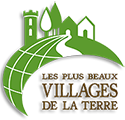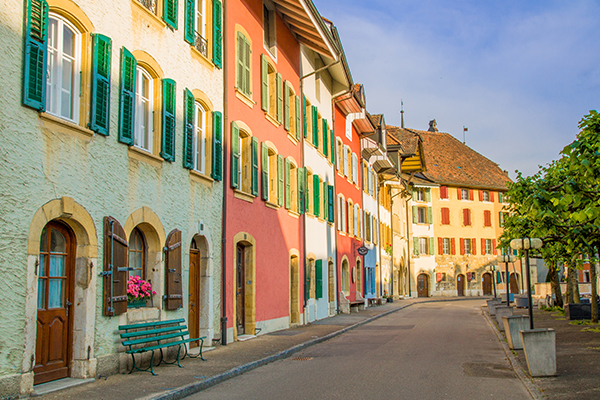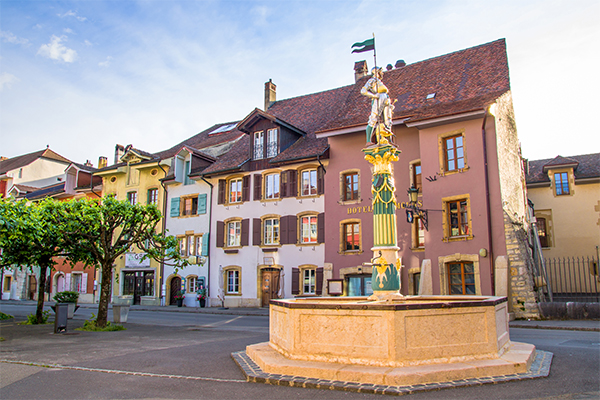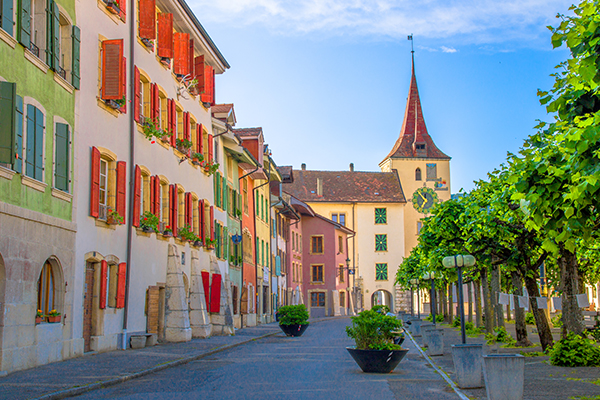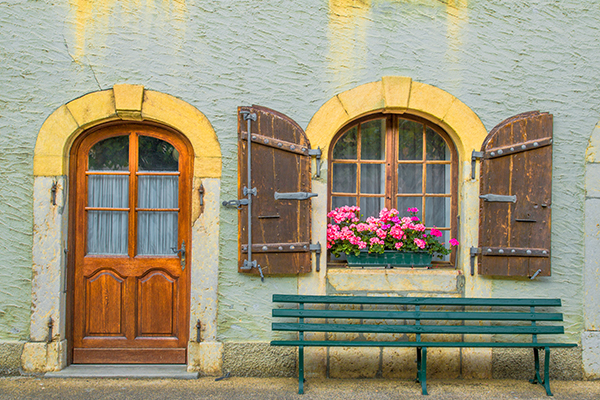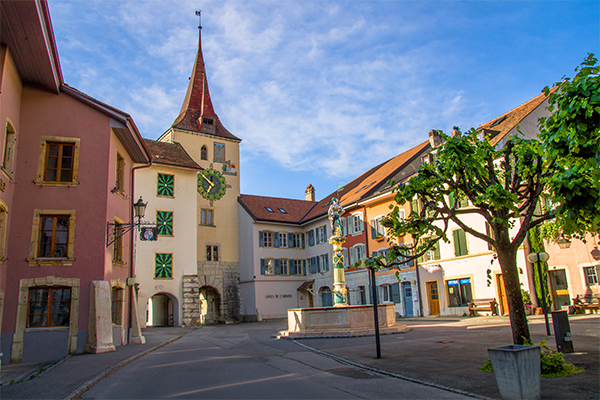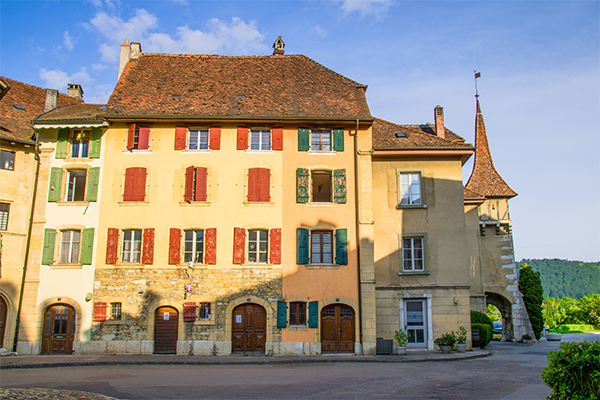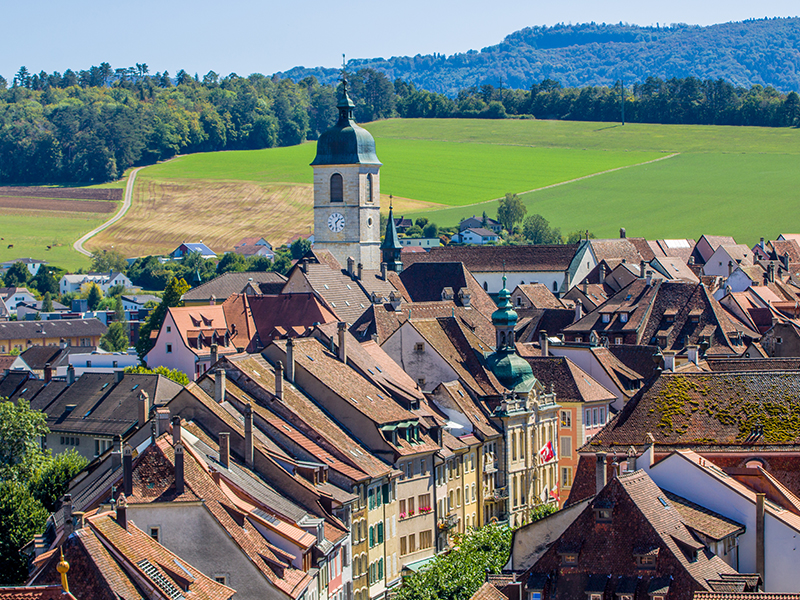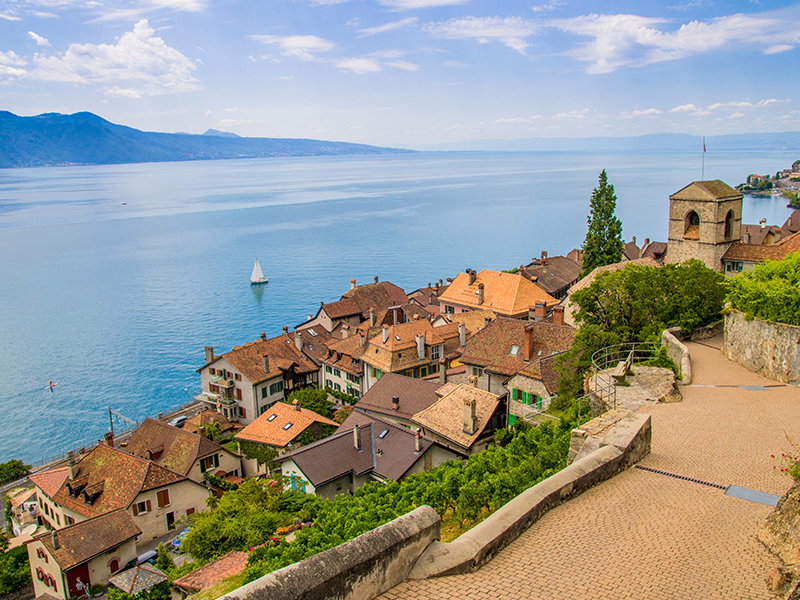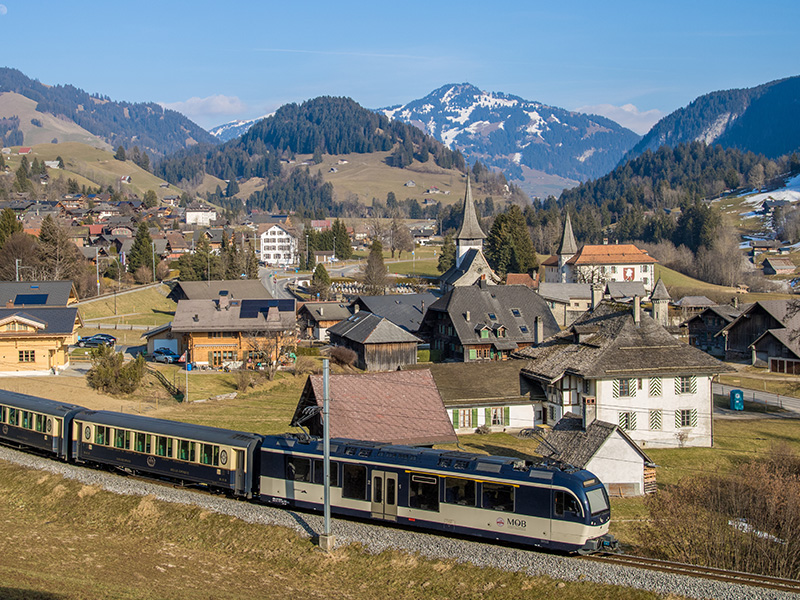Le Landeron
Long, fortified market town, built between 1325 and 1344 by Rudolf IV of Neuchâtel. The main street is lined with houses to the east and west and closed at each end by a gate.
Before the town, there was a first fortified town, Nugerol, on the hillside above the lake, which the Count of Neuchâtel had built opposite the nearby Bishopric of Basel. Nugerol, which in 1260 had a special status favouring its inhabitants (franchise), was destroyed as early as the 12th century during the armed border conflict between the Count and the Bishop, while on the latter's land stood the Schlossberg Castle (1283) and then the village of La Neuveville (from 1312).
In 1325 the count began to rebuild the destroyed city on a new site. He chose a morainic island, called Le Landeron, emerging from the marshy plain. Situated at a short distance from the Thielle and the lake, the new town benefited from the river communications that were so important at the time. Its burghers, successors of those of Nugerol, organized themselves into an autonomous body. In the 15th century, the town prospered, the bourgeoisie developed, and in 1449 it concluded a perpetual alliance with the town of Solothurn. The county of Neuchâtel was then part of the area of influence of the state of Bern. Solothurn, for its part, had views over the present-day Entre-deux-Lacs and on various occasions sought to acquire the castellenies of Le Landeron and Thielle which covered this territory. The struggle for influence between Bern and Solothurn was fierce in the 16th century. Bern endeavoured to introduce the reform of the Landeron, to which the inhabitants, supported by the town of Solothurn, were resolutely opposed. The Commune of Solothurn was renewed several times, but the old dream of extending the territory of this state towards the French-speaking part of Switzerland came to an end in 1707 when the people of Neuchâtel sold their principality to the King of Prussia. On the other hand, the Solothurn presence in Le Landeron remains in the form of an important wine-growing estate, owned by the bourgeois commune. Rural and artisanal population, strong of the autonomy conferred by their franchises. Made circumspect by experience, the old Landeronnais reacted vigorously to anything that appeared to them to undermine their particularism, and their history is punctuated by their acts of rebellion.
The 19th century marked the beginning of the modern era, with the freedom of establishment, the change in political institutions resulting from the creation of the Neuchâtel republic (1848), the development of road and rail communications, the first industries (watchmaking stones), the cleaning up of the great marshland following the first correction of the waters of the Jura, the development of market gardening, agriculture and viticulture. The presence of picturesque architectural witnesses of the past centuries, starting with the village as a whole, the Town Hall (15th century), the fountains, the Chapel of Combes (1682), to name but a few monuments, gives the Landeron a very special charm in addition to that of its natural site.
Not to be missed
Features
There are no upcoming events.
| Culture |  |
| Landscape |  |
| Gastronomy |  |
